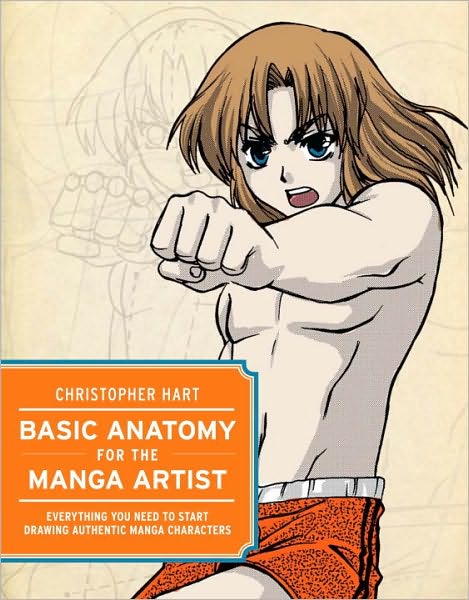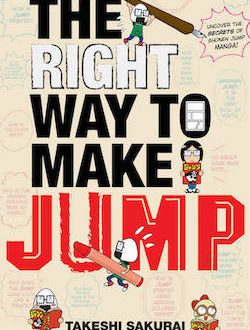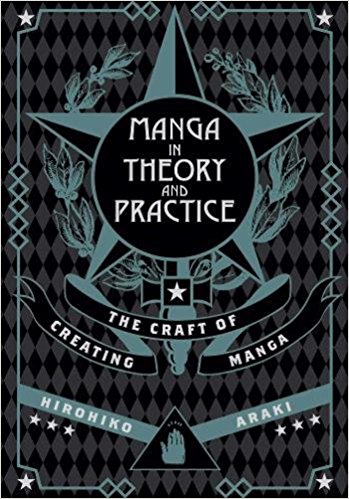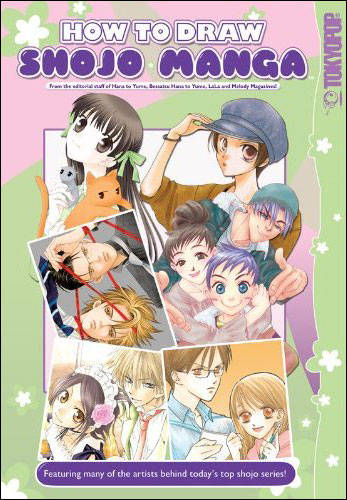Billed as “Everything You Need to Start Drawing Authentic Manga Figures,” Basic Anatomy for the Manga Artist helps artists apply what they learned in life drawing class to character design.
The book is divided into six sections. In the first, “Basic Head Elements,” author Christopher Hart shows readers how to draw eyes, ears, noses, and mouths, stressing the importance of correct placement and symmetry in rendering the face. The next three sections, “The Foundation of the Body,” “Topographical Anatomy,” and “Body Symmetry and Asymmetry,” focus on the skeleton and musculature, offering readers clear strategies for representing bones, tendons, and muscles in their figure drawings. The final two sections, “How Movement, Light, and Perspective Affect the Body” and “Putting It All Together,” build on insights from the earlier chapters, leading readers through the process of drawing dynamic poses and creating original character designs.
Though the book is filled with useful illustrations and helpful advice, Hart’s approach is inconsistent. In some chapters, he breaks down tasks into discrete steps, using simple shapes and guidelines to show readers how to draw a mouth in three-quarters view or render a well-toned leg. Other chapters assume more experience on the part of the reader; a novice would have a hard time re-creating some of Hart’s character designs, as even the preliminary sketches are very polished. (Hart also presumes familiarity with illustration software, instructing readers to add shading to their finished drawings without offering tips for doing so.)
The book’s other problem is in the way that it frames manga as a style, not a storytelling medium. “Basic Anatomy for Manga Artists contains instructions specifically designed for drawing idealized heads and bodies in the authentic Japanese style of manga,” Hart declares in the introduction. But what, exactly, is “the authentic Japanese style of manga”: Naruto? Fruits Basket? 20th Century Boys? Lone Wolf and Cub? Instead of defining manga as a style, it would have been more useful for Hart to show how manga artists use a common set of techniques to achieve different results; after all, Goseki Kojima used the same shortcuts for rendering faces and bodies as Hiromu Arakwa and CLAMP, a point that’s glossed over in the text.
Despite its conceptual flaws, Basic Anatomy for the Manga Artist is still a useful reference. Hart’s cutaway illustrations of the muscular and skeletal systems are particularly helpful for the artist who wants a better understanding of how the body moves. Hart also does a fine job of showing readers how to represent muscles, bones, and facial features using a few well-placed lines — an invaluable skill for any sequential artist, regardless of style.
Review copy provided by Watson-Guptill Publications.




Jade Harris says:
Hehe, yeah, using stylized characters for learning anatomy is kinda shooting the cart off on a rocket before the horse; some knowledge of real anatomy is the foundation of that sort of stylization.
Katherine Dacey says:
For someone who’s had a few life drawing classes, this book might be useful; if you’re new to drawing, however, it’s going to be frustrating slog. (Or, as one of my friends like to say, “Ready, Fire, Aim!”)
Jade Harris says:
Right, exactly, I’d mainly fault the book for calling itself “basic.”
Honestly, I’m not one of those people that thinks an artist needs to have pre-med anatomical knowledge, but it really is an area where you have to do a little personal observation and study before you start letting someone tell you how you’re supposed to do it. I obviously have no problem with the “manga style” but when a developing artist lets someone else tell them how they need to stylize foundations like this, they set themselves up to feel disconnected from their art further down the road. The manga style is a perfectly valid visual vocabulary that connects with artists that want to communicate with it, but they need to learn for themselves a bit of what a face or arm really is before they start telling people about them in any language. :3
llj says:
Yeah, I agree with Jade. I realize that this is basically a more profitable way to sell “how to” books, but for the budding artist it really is better to pick up a “real” anatomy book. I see so many people who try to learn a “style” before their basic foundation has been established and that results in some fairly awkward drawing at times. Style is easy. Fundamentals is hard.
Katherine Dacey says:
I see so many people who try to learn a “style” before their basic foundation has been established and that results in some fairly awkward drawing at times. Style is easy. Fundamentals is hard.
Amen to that! It’s hard to imagine being a successful cartoonist of any kind without a solid grounding in life drawing.
Urban Banshee says:
The problem I have with any Christopher Hart art books is that he can’t draw. That isn’t an insult. I’ve seen plenty of his books and his earlier ones like Manga Mania, they list all the artist that worked on what pages and Christopher Hart only drew a few gag/learn japanese pages in the back. Personally I wouldn’t recomend any of his books simply because they aren’t really his.
That’s the real reason the methods are so inconsistent in these books. I’m an artist myself and though I consider myself pretty decent I wouldn’t be able to teach others how to draw. You can be a great artist but be a lousy teacher, but unfortuatly Christopher Hart isn’t either one.
I’m not completly against How to Draw Manga type books. Heck I have a shelf devoted to artbooks and over half are manga related. At the least good books of this type encurage young/novice artists to practice. Books with really poor anatomy and awkward drawings in them though hinder artists.
Your reviews are always interesting to read, even if I’ve never commented before.
Katherine Dacey says:
Thanks for the feedback—it’s helpful to hear from an experienced artist! I can definitely see the value in a book like this; the main problem, as you point out, is the inconsistent methodology.